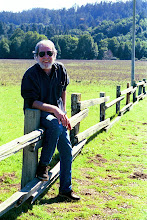I moved a little away from the "industrial" (steel mill) area of my railroad in the past few months to work a bit on the town area. The basics were there but I wanted to finish ballasting the track and do a little groundwork (details). But, as usual, we sit back and look and look and can always find something to improve. So I added the large gray building (a brewery from the back), using four Walthers modular/sectional kits that I'd seen on sale in their catalog. It provided some interesting contrast to the back wall of this section of the layout, vis a vis size, color, and purpose. By which I mean that I decided also to add a little short spur into the delivery area of the building. That required that I take up the track that was extant and put a turnout there, and so on. I didn't want to buy another Code 83 turnout so I dug around for an old Atlas Code 100 switch to use here. Most modelers would castigate me on sight for having done this (mixing track sizes) but my pockets are mostly empty these days . . . and, well . . . that's how it goes. (Operations-wise everything seems to have worked out fine, though; other than a little click-click when the cars' wheels make the transition I haven't had any problems. Yes, the ties are black, they're larger than the Code 83 track's brown ties, and so on, but that's how it goes when you're poor). A very private and personal bonus here, though, was that the turnout I happened to use ended up being one of those my father had bought in the late 50s when he first began to expand the "Christmas layout." I've used these switches (turnouts) before on other layouts so I wasn't surprised that they're still functional after so long -- are they antiques? I don't know the rules for such classifications of things but these switches must be getting close to being so. Over fifty years old. A testimony to both my own pack-rat tendencies and Atlas's products' reliability.
Thus I put the "brewery" together, tore up the old track-work there, put in the turnout and the new spur, ran some cars in and out, and that was that. Time involved? About two weeks working a few nights a week for a few hours . . .
But I had another space I needed to do something with in that area (across the street from "Rocky's Tavern"). I've always wanted to kit-bash a kind of diner, so I did that with an old Roundhouse B&O 19th C. coach I had lying around and that worked out OK (and though I want to add a sign on the roof I haven't yet come up with a good name for the diner . . . any suggestions?)Thus I put the "brewery" together, tore up the old track-work there, put in the turnout and the new spur, ran some cars in and out, and that was that. Time involved? About two weeks working a few nights a week for a few hours . . .
In the meantime, in early January I'd been to a train show at the Dulles Expo center and picked up some small 3 volt lights on the cheap (a dozen for a few dollars). Originally I wasn't planning on lighting any of the town buildings but for some reason decided to do so. That took a few nights and I got most of the little structures lighted (though I need to work a bit on their interiors still . . .)
Also I built a few fences from scratch over a number of nights while watching college basketball games (listening, really, since I can't see my living room TV from where I have to work) and programs on the Science Channel and so on. Eventually I set to work doing the ground details and ballasting the track and then, with my little Kodak digital camera, took a few "night" shots with the camera on a tripod. Not the greatest photos in the world, but not too bad.







